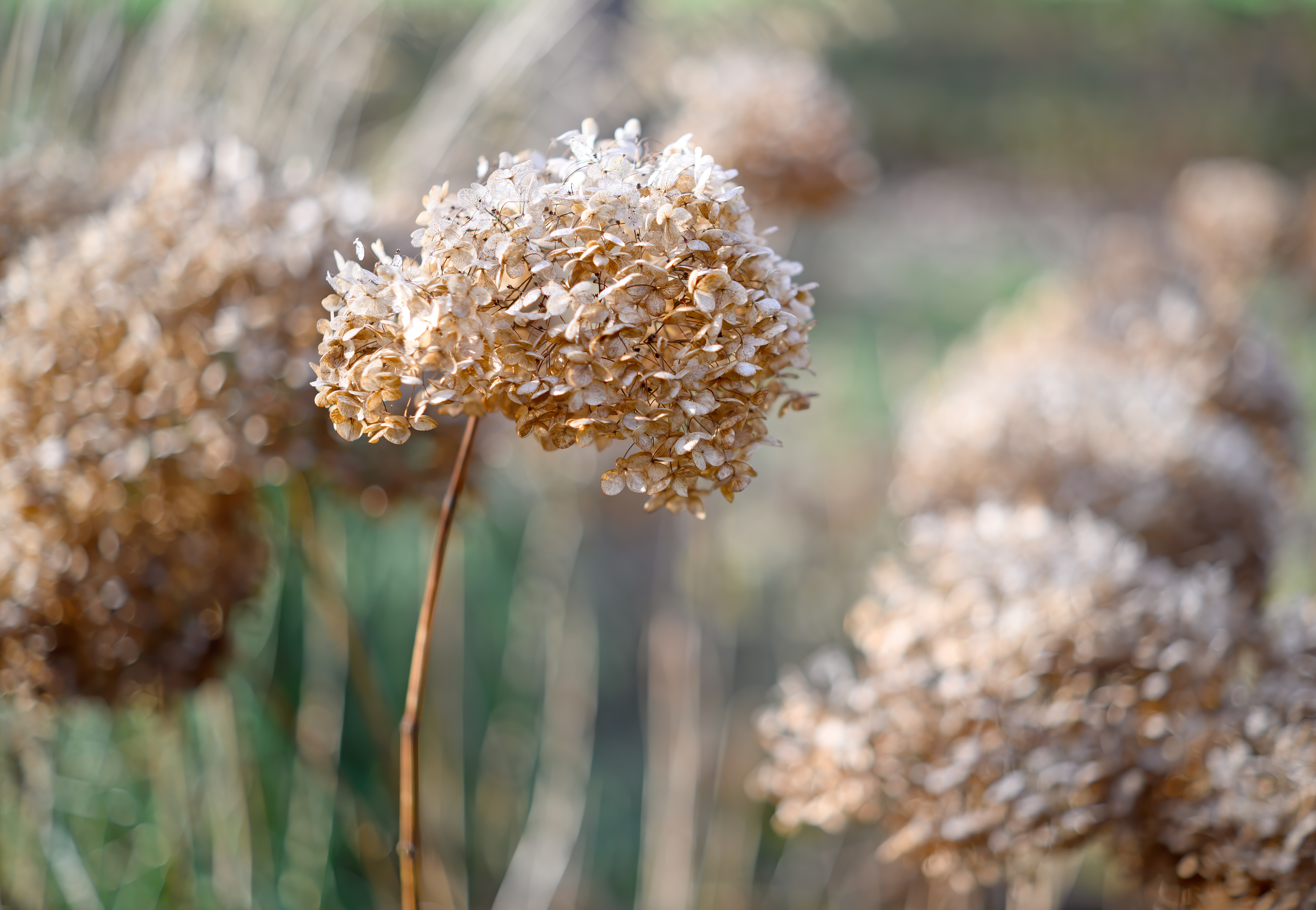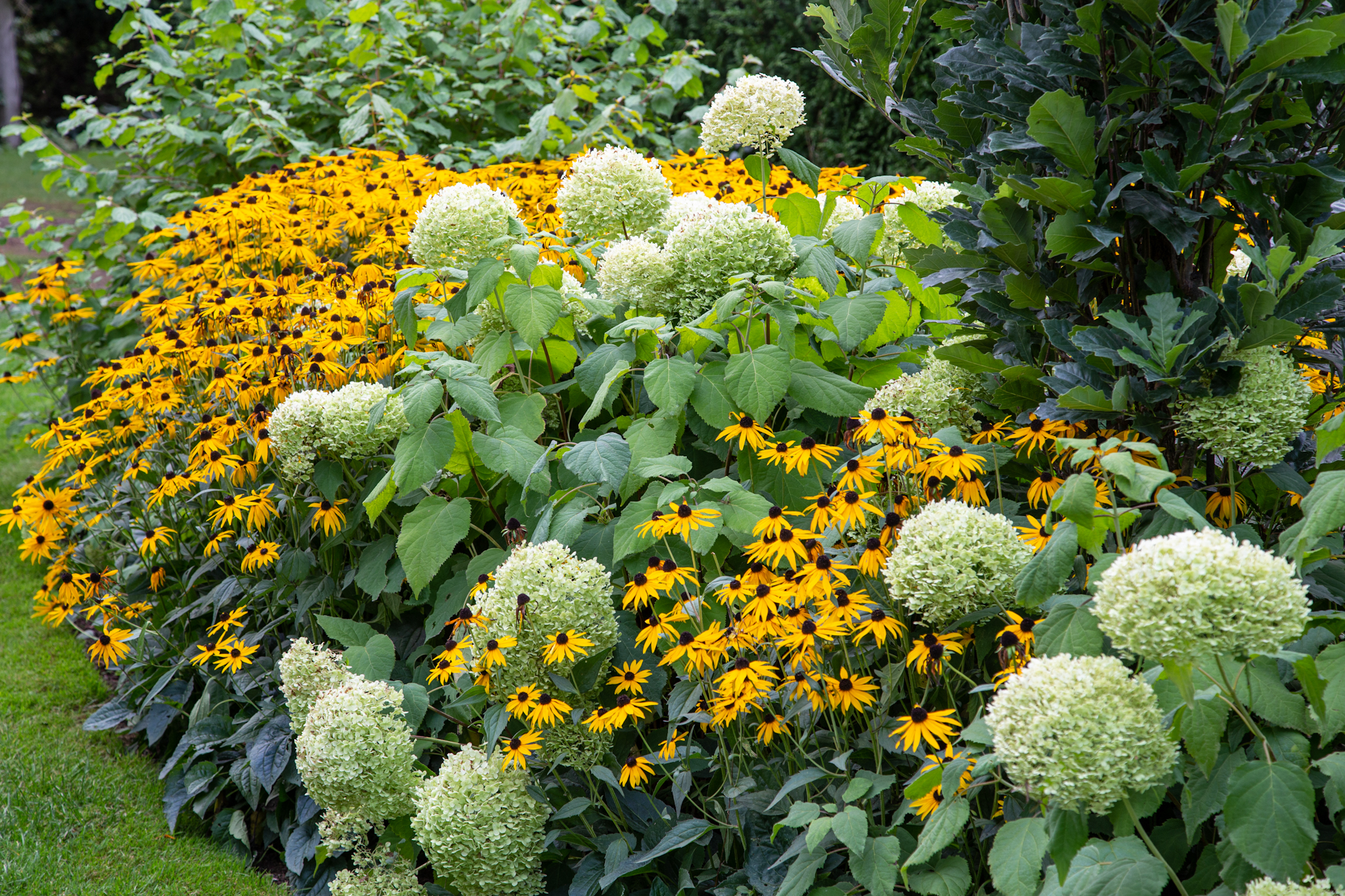Annabelle Hydrangea: How To Care For Your Winter Bloomer
Annabelle Hydrangea: How to Care for Your Winter Bloomer
Annabelle hydrangeas are a popular choice for gardeners because of their large, creamy white blooms that can last for up to two months. They are also relatively easy to care for, making them a good choice for even novice gardeners.
In this blog post, we will discuss the basics of Annabelle hydrangea care. We will cover topics such as planting, watering, fertilizing, pruning, and overwintering. We will also provide some tips for troubleshooting common problems.
Planting Annabelle Hydrangeas
Annabelle hydrangeas prefer full sun to part shade. They will tolerate some shade, but they will not flower as well in deep shade. The soil should be moist, well-drained, and fertile. If your soil is sandy or clayey, you may need to amend it with compost or peat moss.
Annabelle hydrangeas can be planted in the spring or fall. If you are planting in the spring, do so after the last frost. If you are planting in the fall, do so at least six weeks before the first frost.
When planting, dig a hole that is twice as wide and as deep as the root ball of the plant. Place the plant in the hole and backfill with soil, tamping it down gently. Water the plant well.
Watering Annabelle Hydrangeas
Annabelle hydrangeas need regular watering, especially during the first year after planting. Water the plant deeply once a week, or more often if the weather is hot and dry.
In the winter, you should water Annabelle hydrangeas less often. However, you should still keep the soil moist, especially if you live in an area with cold winters.
Fertilizing Annabelle Hydrangeas
Annabelle hydrangeas do not need to be fertilized heavily. A light application of fertilizer in the spring will help the plant to bloom well. You can use a balanced fertilizer, such as 10-10-10, or a fertilizer specifically formulated for hydrangeas.
Pruning Annabelle Hydrangeas
Annabelle hydrangeas can be pruned in the spring or fall. If you prune in the spring, do so after the plant has finished blooming. If you prune in the fall, do so before the first frost.
The best way to prune Annabelle hydrangeas is to remove any dead, diseased, or damaged branches. You can also thin out the plant by removing some of the older branches. This will encourage new growth and more blooms.
Overwintering Annabelle Hydrangeas
Annabelle hydrangeas are hardy in zones 3-9. However, if you live in an area with cold winters, you may need to take some steps to protect your plant from the cold.
One way to protect Annabelle hydrangeas from the cold is to mulch around the plant with a layer of wood chips or pine straw. This will help to insulate the roots and keep them from freezing.
You may also want to cover the plant with a burlap sack or other protective covering. This will help to protect the leaves and flowers from the wind and snow.
Troubleshooting Common Problems
Annabelle hydrangeas are generally trouble-free plants. However, there are a few common problems that you may encounter.
One common problem is leaf scorch. This is caused by hot, dry weather. To prevent leaf scorch, water your plant regularly and make sure that the soil is moist. You may also want to prune the plant to reduce the amount of foliage and help the plant to retain moisture.
Another common problem is mildew. Mildew is a fungal disease that can cause white, powdery spots on the leaves of the plant. To prevent mildew, water your plant in the morning so that the leaves have time to dry before nightfall. You may also want to prune the plant to improve air circulation.
If you encounter any problems with your Annabelle hydrangea, you can usually find help from a local nursery or garden center.
Conclusion
Annabelle hydrangeas are beautiful and easy-to-care-for plants that can add a touch of elegance to any garden. With proper care, Annabelle hydrangeas will bloom for many years to come.
Annabelle hydrangeas are a popular choice for gardeners in many parts of the country, thanks to their large, white blooms and their relatively low maintenance requirements. However, even these hardy plants need some special care in the winter months.
If you live in an area with cold winters, it's important to protect your Annabelle hydrangeas from the cold. One way to do this is to mulch around the base of the plant with a layer of organic material, such as leaves, bark, or straw. This will help to insulate the roots and keep them from freezing.
You may also want to consider wrapping the plant's branches with burlap or another protective material. This will help to prevent the branches from breaking under the weight of snow or ice.
If you live in an area with very cold winters, you may need to bring your Annabelle hydrangea indoors for the winter. If you do this, make sure to place the plant in a cool, bright location.
For more information about caring for Annabelle hydrangeas in the winter, please visit .
FAQ of annabelle hydrangea winter
- How hardy is Annabelle hydrangea?
Annabelle hydrangeas are hardy in USDA zones 3-8. This means that they can withstand temperatures as low as -30 degrees Fahrenheit. However, late frosts can damage the buds, so it is important to plant them in a sheltered location in cold climates.
- How much water does an Annabelle hydrangea need in the winter?
Annabelle hydrangeas need about an inch of water per week during the winter. However, if the weather is very dry, you may need to water them more often. It is important to avoid overwatering, as this can lead to root rot.
- Do I need to prune Annabelle hydrangeas in the winter?
No, you do not need to prune Annabelle hydrangeas in the winter. In fact, pruning them in the winter can actually damage the plant. It is best to wait until spring to prune them.
- How do I protect Annabelle hydrangeas from winter pests and diseases?
There are a few things you can do to protect Annabelle hydrangeas from winter pests and diseases. First, you can plant them in a location that receives full sun to partial shade. This will help to keep the plant healthy and strong. Second, you can apply a light layer of mulch around the base of the plant. This will help to insulate the roots and prevent them from freezing. Finally, you can monitor the plant for signs of pests or diseases. If you see any problems, you can treat them with the appropriate organic or chemical controls.
- How much space does an Annabelle hydrangea need?
Annabelle hydrangeas can grow up to 4-6 feet tall and wide. So, it is important to give them enough space to spread out. When planting them, allow at least 4-6 feet of space between each plant.
Image of annabelle hydrangea winter
5 different images of "annabelle hydrangea winter" from Pinterest:
- A close-up of a bare Annabelle hydrangea shrub with its dark brown branches and pointy buds.

- A full view of an Annabelle hydrangea shrub covered in snow. The snow has settled on the branches and leaves, creating a beautiful winter scene.

- A row of Annabelle hydrangea shrubs in a winter garden. The shrubs are bare, but their dark brown branches provide structure and interest to the garden.
- A Annabelle hydrangea shrub with its leaves turning a golden brown color in the fall. The leaves will eventually fall off, but the shrub will still be a beautiful sight in the winter.

- A Annabelle hydrangea shrub with its leaves turning a reddish-purple color in the fall. The leaves will eventually fall off, but the shrub will still be a beautiful sight in the winter.

Post a Comment for "Annabelle Hydrangea: How To Care For Your Winter Bloomer"